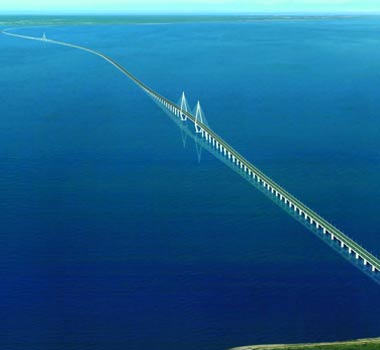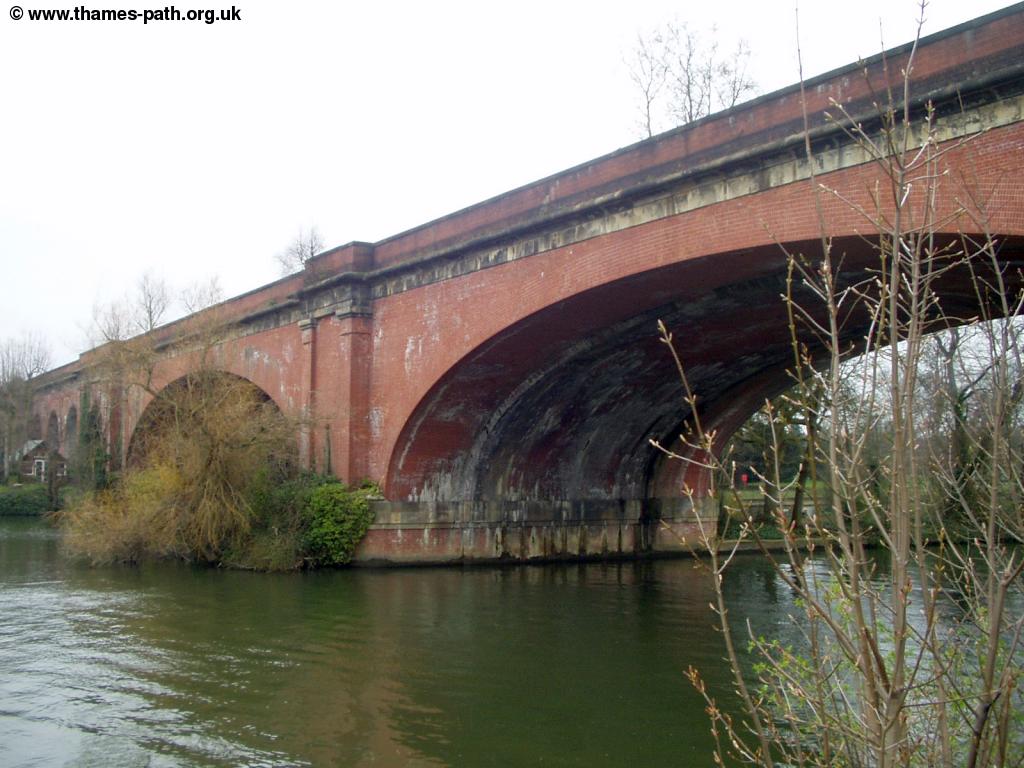Hangzhou bridge bonanza
By Daniel Allen



BEIJING - China's Hangzhou Bay Bridge Bay Bridge, at 35 kilometers the world's longest trans-oceanic bridge, is having a wide-reaching impact on the economy of northeastern Zhejiang province and the seaport city of Ningbo to the south of the Yangtze River Delta.
Opened in May 2008, the 12 billion yuan (US$1.75 billion) bridge is a showcase of Chinese ingenuity and technological prowess. Built to withstand extreme natural forces, the serpentine structure connects the cities of Jiaxing and Ningbo.
"The opening of the bridge has meant that the vaunted 'two-hour circle' of the Yangtze River Delta region has finally become a reality," said Patrick Tong, secretary general of the Foreign Expert Committee of the Ningbo Chamber of International Commerce. "The bridge is not only convenient for tourists, but is also a vital link between booming provinces in one of China's most dynamic economic zones. It is triggering a restructuring of the whole economic landscape."
Andrea Bernardi, who lectures in organization studies at Nottingham University Ningbo's Business School said "China's 'Golden Industrial Triangle' - a region bordered by Shanghai, Hangzhou and Ningbo - is really booming right now. The bridge has given Ningbo and companies operating in the area a key competitive advantage."
Slashing the road distance between Ningbo and Shanghai from around 310 km to 180 km, and driving time from around four hours to 2ฝ hours, the Hangzhou Bay Bridge has clearly improved Ningbo's strategic standing. "We have definitely secured more business in the delta since the bridge opened," said Wang Wei, of Rockwood International Freight, a logistics service provider based in Hong Kong and Ningbo. “It's far more attractive for our clients to accept shipments out of Shanghai because of the savings in time and money."
The bridge has also boosted foreign direct investment, said Wang Biao, chief economist of Camellia Universal, a Ningbo-based business consultancy. "Foreign companies attracted to Ningbo now include the likes of BP, HSBC, Samsung, Coca-Cola, Citibank, Allianz, UPS, Maersk Line, GM, Mitsubishi, Hitachi and Dupont."
Tong said that at the Ningbo end of the bridge, "the counties of Cixi and Yuyao are now in prime positions. In Cixi, the Hangzhou Bay New Zone - which now covers 35 square kilometers - is still undergoing further expansion. Up until 2009, there were already 254 industrial projects established in the HBNZ, and more companies are setting up operations every month."
One major beneficiary of Ningbo's logistical development is the city's extensive port area. The deepest seaport in China, Ningbo Port can handle vessels up to 300,000 tonnes, and cargo throughput is second only to Shanghai. Ningbo Port Company, the operator of Ningbo port, listed on the Shanghai Stock Exchange last year, and will go public in Hong Kong soon to raise further capital for ongoing development and expansion. A new line from the port to India and Pakistan opened in January this year.
In 2006, to maintain competition with Shanghai's expanding Yangshan Port, Ningbo Port merged operations with a port on the nearby island of Zhoushan. The long-term objective is to increase container throughput from 10.93 million twenty-foot equivalent units (TEUs) in 2008 to 30 million TEUs by 2020. Despite lingering effects of the recent economic downturn, the port posted a container throughput of 966,100 TEUs in January 2010, a near 20% year-on-year increase. Continuing the upward trend, cargo and container throughput both reached a historical monthly high in January 2011.
To underpin growth in imports and exports, a number of logistics parks, free trade and industrial zones have already been set up or are in the pipeline around Ningbo Port. The long-established Ningbo Economic and Technical Development Zone, from where an expressway leads straight to the Hangzhou Bay Bridge, is attracting investment from overseas.
The Hangzhou Bay Bridge has also had a positive impact on Ningbo's tourism industry.
"Many more Shanghai residents are taking one-day or two-day tours in Ningbo now," said Ye Xingfa, Marketing Director of the Ningbo Tourism Organization. "Last year, the number of international tourists visiting Ningbo was about 800,000, and the number of domestic tourists was around 40 million. This year we hope these figures will grow to around 1 million about 45 million respectively, and the bridge is certainly a major factor in this increase."
Increased tourist numbers are having a knock-on effect on investment.
"We've seen new hotels from Shangri-La, Marriott, Sheraton, and Sofitel recently," said Ye. "Investors in Ningbo's tourist infrastructure include private companies such as the Songcheng and Nanyuan Groups, and the local government, which has upgraded attractions such as the Tianyi Pavilion Library, Hemudu Culture Site Museum and Xi Kou Scenic Area."
Having completed the Hangzhou Bay Bridge, Zhejiang continues to invest heavily in transport infrastructure to underpin economic growth. Last year, ground was broken on five high-speed railways connecting Nanjing and Hangzhou, Hangzhou and Ningbo, Shanghai and Hangzhou, Hangzhou and Changsha, and Jinhua and Wenzhou. According to a newly released 10-year urban plan for the province, three cross-sea railways will also soon be constructed, connecting Ningbo with Zhoushan, Wenzhou with Dongtou County, and Ningbo with Shanghai via another new bridge across Hangzhou Bay. The latter will shorten the railway link between Shanghai and Ningbo by more than 300 kilometers.
"Every time I cross the Hangzhou Bay Bridge I think of a similar structure - the Oresund Bridge - which links Denmark and Sweden," said Bernardi. "Since Oresund opened in 2000, the Danes and Swedes have experienced ever deeper and more productive ties. With continued investment, Ningbo and neighboring areas will undoubtedly experience the same effect, albeit with 'Chinese characteristics', of course."
Daniel Allen is a freelance writer and photographer currently living in Beijing.
http://www.atimes.com/atimes/China_B.../MC31Cb02.html
By Daniel Allen



BEIJING - China's Hangzhou Bay Bridge Bay Bridge, at 35 kilometers the world's longest trans-oceanic bridge, is having a wide-reaching impact on the economy of northeastern Zhejiang province and the seaport city of Ningbo to the south of the Yangtze River Delta.
Opened in May 2008, the 12 billion yuan (US$1.75 billion) bridge is a showcase of Chinese ingenuity and technological prowess. Built to withstand extreme natural forces, the serpentine structure connects the cities of Jiaxing and Ningbo.
"The opening of the bridge has meant that the vaunted 'two-hour circle' of the Yangtze River Delta region has finally become a reality," said Patrick Tong, secretary general of the Foreign Expert Committee of the Ningbo Chamber of International Commerce. "The bridge is not only convenient for tourists, but is also a vital link between booming provinces in one of China's most dynamic economic zones. It is triggering a restructuring of the whole economic landscape."
Andrea Bernardi, who lectures in organization studies at Nottingham University Ningbo's Business School said "China's 'Golden Industrial Triangle' - a region bordered by Shanghai, Hangzhou and Ningbo - is really booming right now. The bridge has given Ningbo and companies operating in the area a key competitive advantage."
Slashing the road distance between Ningbo and Shanghai from around 310 km to 180 km, and driving time from around four hours to 2ฝ hours, the Hangzhou Bay Bridge has clearly improved Ningbo's strategic standing. "We have definitely secured more business in the delta since the bridge opened," said Wang Wei, of Rockwood International Freight, a logistics service provider based in Hong Kong and Ningbo. “It's far more attractive for our clients to accept shipments out of Shanghai because of the savings in time and money."
The bridge has also boosted foreign direct investment, said Wang Biao, chief economist of Camellia Universal, a Ningbo-based business consultancy. "Foreign companies attracted to Ningbo now include the likes of BP, HSBC, Samsung, Coca-Cola, Citibank, Allianz, UPS, Maersk Line, GM, Mitsubishi, Hitachi and Dupont."
Tong said that at the Ningbo end of the bridge, "the counties of Cixi and Yuyao are now in prime positions. In Cixi, the Hangzhou Bay New Zone - which now covers 35 square kilometers - is still undergoing further expansion. Up until 2009, there were already 254 industrial projects established in the HBNZ, and more companies are setting up operations every month."
One major beneficiary of Ningbo's logistical development is the city's extensive port area. The deepest seaport in China, Ningbo Port can handle vessels up to 300,000 tonnes, and cargo throughput is second only to Shanghai. Ningbo Port Company, the operator of Ningbo port, listed on the Shanghai Stock Exchange last year, and will go public in Hong Kong soon to raise further capital for ongoing development and expansion. A new line from the port to India and Pakistan opened in January this year.
In 2006, to maintain competition with Shanghai's expanding Yangshan Port, Ningbo Port merged operations with a port on the nearby island of Zhoushan. The long-term objective is to increase container throughput from 10.93 million twenty-foot equivalent units (TEUs) in 2008 to 30 million TEUs by 2020. Despite lingering effects of the recent economic downturn, the port posted a container throughput of 966,100 TEUs in January 2010, a near 20% year-on-year increase. Continuing the upward trend, cargo and container throughput both reached a historical monthly high in January 2011.
To underpin growth in imports and exports, a number of logistics parks, free trade and industrial zones have already been set up or are in the pipeline around Ningbo Port. The long-established Ningbo Economic and Technical Development Zone, from where an expressway leads straight to the Hangzhou Bay Bridge, is attracting investment from overseas.
The Hangzhou Bay Bridge has also had a positive impact on Ningbo's tourism industry.
"Many more Shanghai residents are taking one-day or two-day tours in Ningbo now," said Ye Xingfa, Marketing Director of the Ningbo Tourism Organization. "Last year, the number of international tourists visiting Ningbo was about 800,000, and the number of domestic tourists was around 40 million. This year we hope these figures will grow to around 1 million about 45 million respectively, and the bridge is certainly a major factor in this increase."
Increased tourist numbers are having a knock-on effect on investment.
"We've seen new hotels from Shangri-La, Marriott, Sheraton, and Sofitel recently," said Ye. "Investors in Ningbo's tourist infrastructure include private companies such as the Songcheng and Nanyuan Groups, and the local government, which has upgraded attractions such as the Tianyi Pavilion Library, Hemudu Culture Site Museum and Xi Kou Scenic Area."
Having completed the Hangzhou Bay Bridge, Zhejiang continues to invest heavily in transport infrastructure to underpin economic growth. Last year, ground was broken on five high-speed railways connecting Nanjing and Hangzhou, Hangzhou and Ningbo, Shanghai and Hangzhou, Hangzhou and Changsha, and Jinhua and Wenzhou. According to a newly released 10-year urban plan for the province, three cross-sea railways will also soon be constructed, connecting Ningbo with Zhoushan, Wenzhou with Dongtou County, and Ningbo with Shanghai via another new bridge across Hangzhou Bay. The latter will shorten the railway link between Shanghai and Ningbo by more than 300 kilometers.
"Every time I cross the Hangzhou Bay Bridge I think of a similar structure - the Oresund Bridge - which links Denmark and Sweden," said Bernardi. "Since Oresund opened in 2000, the Danes and Swedes have experienced ever deeper and more productive ties. With continued investment, Ningbo and neighboring areas will undoubtedly experience the same effect, albeit with 'Chinese characteristics', of course."
Daniel Allen is a freelance writer and photographer currently living in Beijing.
http://www.atimes.com/atimes/China_B.../MC31Cb02.html







Comment